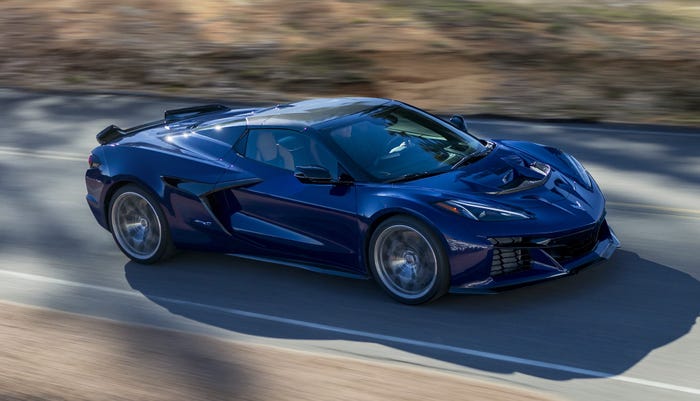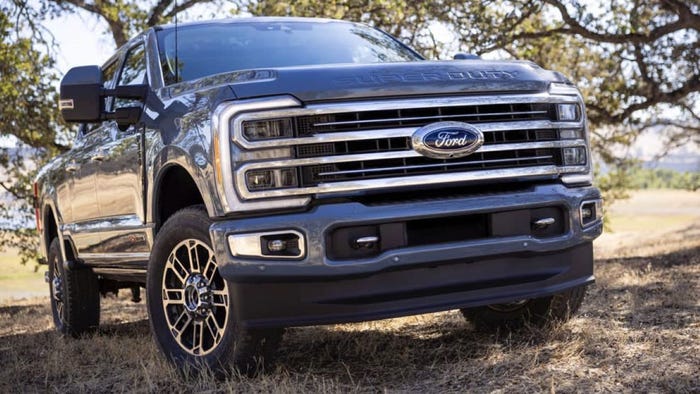Budget for Obsolescence
While the year is still young, it's a good time for the parts manager to quantify potential parts inventory obsolescence and think about devising ways to deal with its possible excess beyond eliminating it through manufacturers' programs. Many parts managers wait until the end of their fiscal year, then scramble to solve revealed problems. Instead, evaluate your ability to get rid of obsolescence
March 1, 2004

While the year is still young, it's a good time for the parts manager to quantify potential parts inventory obsolescence and think about devising ways to deal with its possible excess beyond eliminating it through manufacturers' programs.
Many parts managers wait until the end of their fiscal year, then scramble to solve revealed problems. Instead, evaluate your ability to get rid of obsolescence through the manufacturer return plan as soon as possible. If this evaluation shows a possible obsolescence amount greater than the ability to remove it through conventional return programs, then you have time for alternative methods. Basically, you are budgeting for your obsolescence.
What's a good way to budget? I devised an easy method. The scenario at right shows the process and possible outcomes.
In this case, obsolescence for business year 2003 is $30,360. Unsold and nonreturnable special orders (those specifically ordered parts that, for whatever reason, customers did not purchase and are past the deadline for return to the manufacturer) amount to $8,500. So, the total amount of obsolescence for 2003 is $38,860.
Total stock order purchases for 2003 amounted to $695,000. This example assumes the manufacturer allows 5% for valid stock order purchases earning the parts department $34,750 in obsolescence return. In this illustration, the obsolescence exceeded the return capability by $4,110.
Two keys for estimating potential obsolescence for 2004: the $4,110 carryover in obsolescence from 2003 and the inventory amount of $33,120 in the 7-12 months-no-sale category. Those parts have little chance of selling. Combining the obsolescence carryover of $4,110 with the $33,120, the estimated obsolescence for 2004 is $37,230.
The only pieces missing from this estimate would be any unsold nonreturned special order parts from 2004 and excess inventory the manager may want to return.
Now that the obsolescence for 2004 is estimated with some certainty, how much of it will be returned to the manufacturer? If sales were expected to stay the same for 2004 as for 2003, then anticipate the same amount of return dollars as 2003.
Barring big price increases, a flat sales year for 2004 would result in a shortage of $2,500 for obsolescence return. However, the parts manager forecasts a 16% sales increase for 2004. The manager also makes 75% of purchases on stock order, which qualifies for the 5% return allowance.
Since cost of goods sold are relative to sales, the manager can expect stock order purchases for 2004 to increase by 12%. So, the manager can expect the 5% return allowance to increase by the same percentage. This will result in an estimated return allowance of $38,920 for 2004.
When the estimated return allowance calculated for 2004 is applied to the estimated obsolescence for 2004, the difference is an estimated return reserve balance of plus $1,690. In this case, the parts manager can be reasonably assured of eliminating estimated accrued obsolescence for 2004 with additional return dollars available for special orders or excess stock.
What if obsolescence costs exceed return dollars available? Then fast action is required to address the situation.
Gary Naples is a parts consultant to dealers and manufacturers. He's authored two books on parts management. He's at 570-824-1528/[email protected].
Scenario (business years 2003 and 2004)
Inventory | $276,000 |
Obsolescence for 2003 (>12 months no sale) | $30,360 |
Unsold and nonreturnable special order parts from 2002 | $8,500 |
Total obsolescence for 2003 | $38,860 |
Parts 7 to 12 months no sale | $33,120 |
Stock purchases 2003 | $695,000 |
Return reserve accrued (5%) 2003 | $34,750 |
Obsolescence carryover from 2003 | $4,110 |
Estimated obsolescence 2004 | $37,230 |
Total parts sales increase for 2004 | 16% |
Stock order purchases increase 2004 (75% of total purchases) | 12% |
Total estimated stock order purchases for 2004 | $778,400 |
Estimated return reserve (5%) for 2004 | $38,920 |
Balance of return reserve for 2004 | +$1,690 |
About the Author(s)
You May Also Like
_(2).jpg?width=700&auto=webp&quality=80&disable=upscale)


